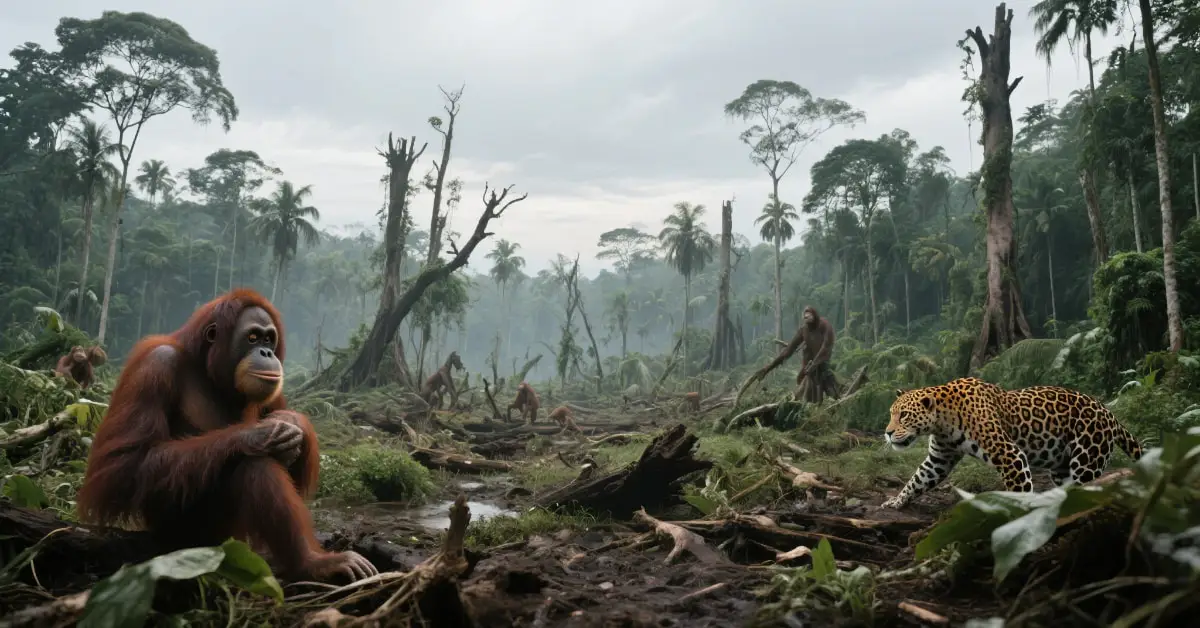Deforestation Effects on Wildlife: How Habitat Loss Threatens Global Biodiversity

Deforestation effects on wildlife have escalated alarmingly, causing rapid habitat loss and threatening global biodiversity on an unprecedented scale. From lush rainforests to temperate woodlands, human expansion and logging are disrupting fragile ecosystems. As animals lose shelter, breeding grounds, and food sources, countless species face extinction, leading to ecological imbalances. In this article, we explore how deforestation is decimating wildlife populations and what urgent action is needed to reverse this crisis.
Major Deforestation Effects on Wildlife Habitat.
The most devastating impact of deforestation is the destruction of habitats that sustain countless animal species.
- Forest clearing displaces species, forcing them into unfamiliar areas where survival is harder.
- Food scarcity intensifies as native plants and prey vanish from deforested regions.
- Deforestation fragments ecosystems, isolating animal populations and reducing gene flow.
- Loss of shelter increases vulnerability to predators and extreme weather events.
These deforestation effects on wildlife are particularly severe in tropical regions like the Amazon and the Congo Basin.
Biodiversity Loss from Forest Clearance.
Global biodiversity is rapidly declining due to widespread forest clearance and land conversion.
- Over 80% of land-based species live in forests; when forests vanish, so do countless lifeforms.
- Iconic species such as orangutans, tigers, and jaguars are becoming critically endangered.
- Invasive species often thrive in disturbed ecosystems, pushing native species toward extinction.
- Disrupted food chains lead to unpredictable consequences for entire ecosystems.
How Human Activities Accelerate Deforestation Effects on Wildlife
Logging, mining, urbanization, and agriculture are primary drivers of deforestation affects on wildlife.
- Illegal logging operations remove critical canopy cover essential to rainforest ecosystems.
- Agricultural expansion clears vast land areas, leaving no buffer zones for native species.
- Infrastructure projects fragment landscapes, cutting off animal migration routes.
- Slash-and-burn techniques produce harmful air pollution and destroy entire habitats.
🔗 Tools & Resources:
Preventing Habitat Loss and Restoring Biodiversity.
There are actionable solutions to reduce deforestation effects on wildlife and restore balance in ecosystems.
- Reforestation programs help recreate wildlife corridors and reconnect fragmented habitats.
- Legal protection for high-biodiversity regions reduces illegal encroachment.
- Sustainable farming and logging practices mitigate harm to the surrounding environment.
- Educating communities about wildlife conservation fosters stewardship and awareness.
👩🌾 FAQs
Q1: How does deforestation directly affect animal populations?
A1: It destroys habitats, food sources, and shelter, increasing the extinction risk for many species.
Q2: Can animals adapt to deforested environments?
A2: Few species can adapt. Most either migrate or perish due to a lack of food and shelter.
Q3: What regions are most affected by deforestation?
A3: The Amazon, Congo Basin, and Southeast Asia face the highest rates of deforestation and biodiversity loss.
Q4: What role can the public play in reducing deforestation effects on wildlife?
A4: Support conservation groups, reduce paper/wood use, and advocate for sustainable products.
🔹 CTA:
Join Global Conservation Efforts Now! Support reforestation, adopt eco-conscious habits, and fund wildlife sanctuaries. Take part in reversing deforestation effects on wildlife today.
Related
Discover more from Ecofriendly
Subscribe to get the latest posts sent to your email.


